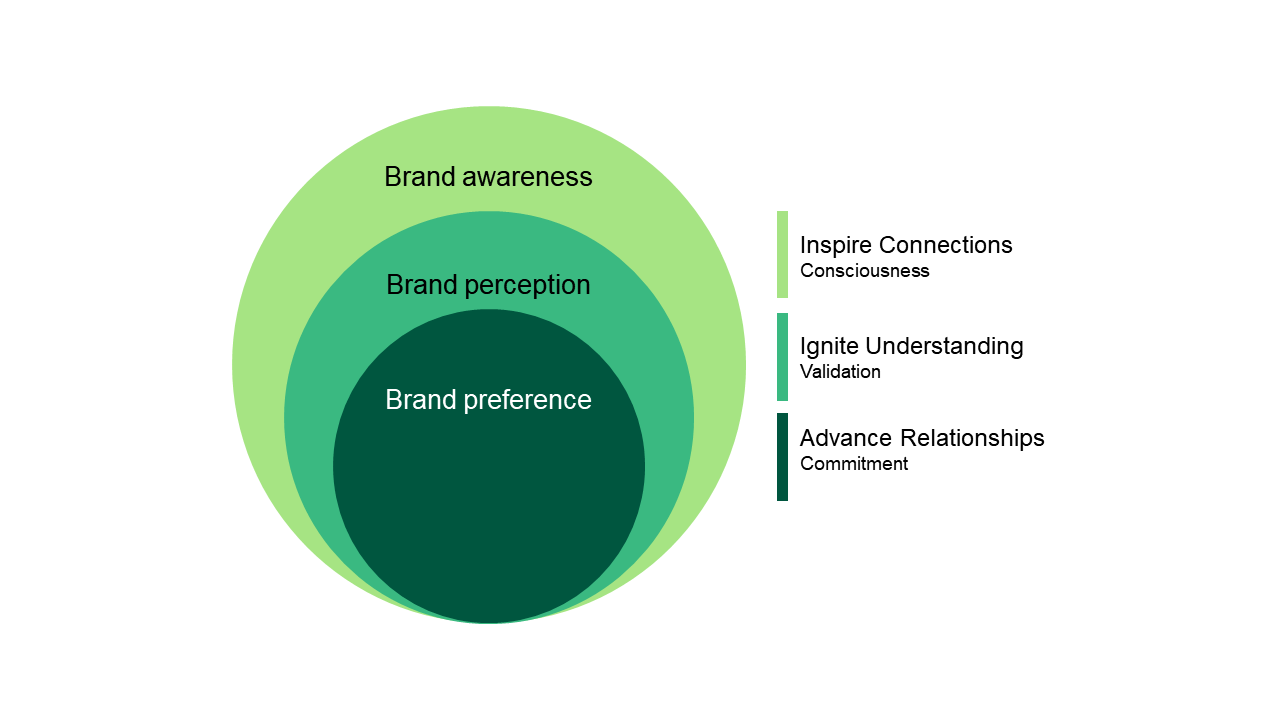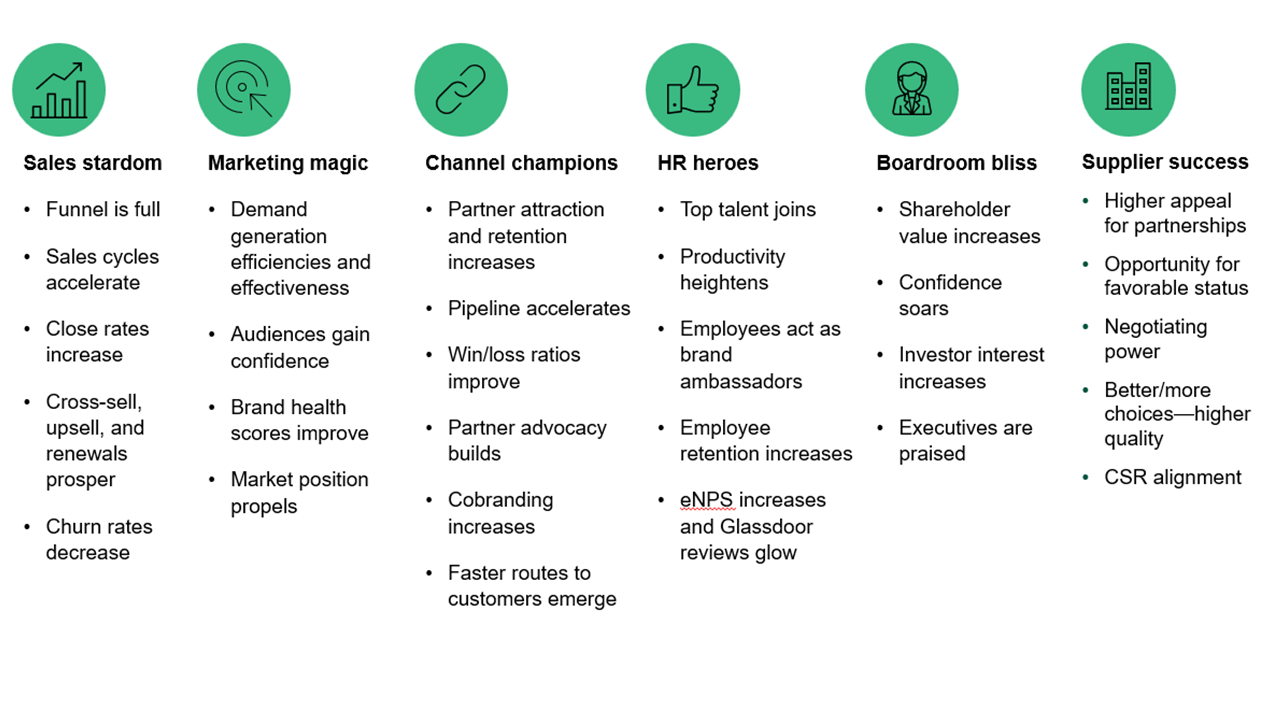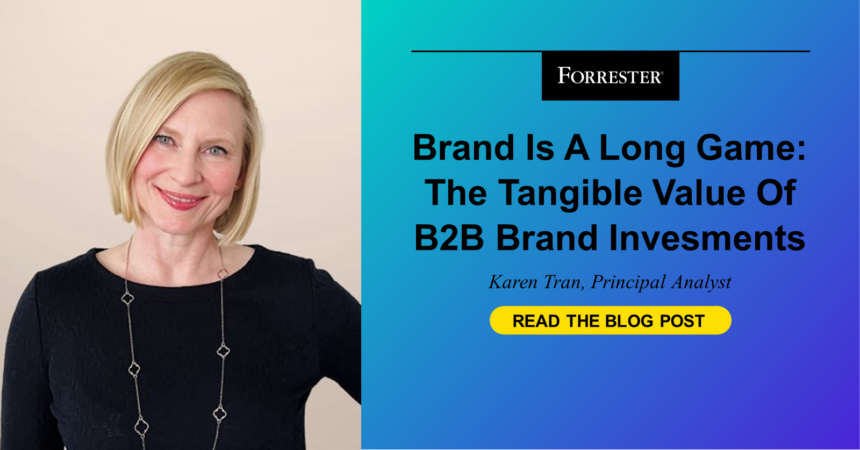Brand investments are like retirement investments. The idea is to invest regularly and consistently starting as early as possible, knowing that by the time retirement hits, the value will have accrued over time and the investments will have compounding returns.
When we begin the uphill climb of investing, the returns may feel modest. It’s difficult to see major progress in a few months’ time, and we wonder how we will reach our goal — but as time goes on and we continue investing, we can see the compounding value. If we’ve made consistent investments, we can look back at annual (and even quarterly) intervals and bask in our progress. What a great feeling that is — but it requires a regular and committed effort.
I’m speaking about both brand and retirement investments. Brand is a long game that plays out over quarters and years. The time to value is longer than demand programs whose purpose is to drive conversions within a sales cycle. Consistent brand investments over time build lasting relationships — and trust — that influence buyer behavior and drive business growth.
Brand Investments Build Lasting Relationships
In his book “The 7 Habits of Highly Effective People,” Stephen R. Covey popularized the idea of the “emotional bank account,” where people proactively engage in acts that build trust. All relationships develop over time through shared experiences and “deposits” of interest, goodwill, and engagement. Brands, too, build relationships with people through experiences over time that, if positive and memorable, result in trust, connection, and loyalty. The relationship-building process can be divided into three primary levels:
- Brand awareness inspires consciousness and connection. According to Forrester’s Business Trust Survey, 2023, 77% of purchase influencers consider brand awareness when deciding whether to trust an organization.
- Brand perception ignites understanding and validation, where audiences develop positive associations with the brand and grasp its market category, solution offerings, and purpose.
- Brand preference advances relationships to commitment, where loyal advocates and devoted customers emerge. In Forrester’s Business Trust Survey, 2023, 83% of global purchase influencers (who trust a business they purchased from in the past 12 months) say they are likely to continue to do business with that company.
Just like personal relationships, these connections require time, effort, and meaningful investments.
Inconsistent Investments Yield Inconsistent Results
Consistency is key when it comes to brand investments. Unfortunately, some businesses mistakenly believe that, once certain goals are achieved, they can cut back on brand programs without negative consequences. This inconsistency can lead to a loss of ground and the need for higher reinvestment in the future. A study from Boston Consulting Group shows that the cost of regaining lost market share requires a future investment of $1.85 for every $1.00 saved from cuts in brand spending. Building strong brand relationships requires consistent and meaningful investments.
Brand Lifts The Entire Organization
Consistent brand activation positively impacts all areas of a business. Marketing efforts are fortified as brand programs provide top-line messaging, secure market positions, and engage customer and employee advocacy. Sales and partner ecosystems thrive with a strong, credible brand as buyer awareness and perceptions increase. Brand value also attracts investors, board members, and suppliers, leading to increased shareholder value.

Want to learn more? Forrester clients can read the report: Brand Investments Drive Tangible, Lasting Value.
Schedule a guidance session or inquiry with me, and follow or connect with me on LinkedIn.







